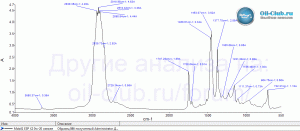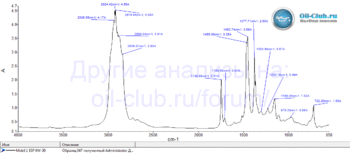Klutch9
Thread starter
This is great info, and is the answer to the question I asked to start this thread. Thank you!!! Didn’t realize the base oils were ever so slightly different between the two oils. Good to know they use the same add pack. These really are two oils, that if one wanted to mix, would do quite well together.OK, let's repeat this again for those who don't want to search:
1. Both oils have the same Infineum additive pack. A difference of 10 or 20ppm of some element does not mean anything; those are just batches.
2. Besides grade, HTHS is the game here. 0W30 will provide a better protection margin.
3. For those who obviously do not want to spend time searching hundreds of topics here, MB 229.5/51/52 are the gold standard of approvals. MB229.71 has similar limits, but bcs. it is 0W20 approval, Noack has higer limits (11%) and HTHS is obviously down. It is fuel efficiency approval.
So, here are links with elements etc:
Mobil1 ESP 0W20 X2
Mobil1 ESP 0W30
Here is translation of VOA:
Mobil1 ESP 0W20 X2:
The oil is declared as: API SN* (meets engine testing requirements), ACEA A1/B1, MB 229.71, VW 508 00/509 00, Porsche C20, Jaguar Land Rover STJLR.51.5122.
1) The oil meets the SAE standard and can be called xxW-20.
2) Viscosity at 40C = 40.77 - in terms of fuel economy during warm-ups, this oil is better than 5W-20, 5W-30, 5W-40, and better than most 0W-20. That is, despite the demanding tolerances of Mercedes and Volkswagen for wear, it is also economical.
3) Viscosity at 100C = 8.04 - the oil passes the SAE standard from 6.9 to 9.3. Normal.
4) Alkaline number = 8.76 - oil with above average detergent/neutralizing properties. Most likely, this oil, like MB 229.71 and VW 502/505, will be recommended for long change intervals.
5) Sulfated ash content = 0.92 - but should be 0.8.
6) Flash point = 230C - for 0W-20 oil this is a decent flash point, the PAO + GTL + Esters base makes itself known.
7) Pour point, below -60C - the oil has very good low-temperature properties, suitable even for regions with a harsh winter climate. Real synthetic oil - that says it all.
8) Sulfur content = 0.214 - the sulfur content is very low, this is an advantage of the modern additive package and the purity of the base oils.
9) Infineum additive package - this is probably an open secret that everyone already knows
10) Additives consist of organic, trinuclear molybdenum, which reduces friction and increases fuel economy. Anti-wear additives based on ZDDP (phosphorus and zinc). Boron as an ashless dispersant, holding particles of dirt in suspension and most likely something else based on boron, detergent, anti-wear additive, etc. And also calcium salicylates - a modern, effective detergent - washes, neutralizes acids.
11) Oxidation = 39.3 - tells us that the oil contains esters.
The IR spectrum of Fourier shows that the oil is based on PAO synthetics + GTL + Esters. I also looked at the MSDS - it matches the stated one.
Conclusion: The oil has the latest approval MB 229.71 and VW 508 00/509 00. Fully synthetic PAO + GTL + Esters. Excellent low-temperature properties. Good thermal stability at high temperatures (not bad flash point 230C). Esters additionally reduce friction and have polar properties to protect against wear. This oil can be recommended to owners of German cars (where recommended by the manual), to achieve greater fuel efficiency, as well as for using the car in Siberia and the Far North. The only disadvantage that was found is high sulfate ash content for this class.
Mobil1 ESP 0W30:
The oil is declared as: ACEA C3; VW 504 00 / 507 00; MB-Approval 229.52; MB-Approval 229.51; MB-Approval 229.31; Porsche C30.
1) Pour point -57C - extremely low! That is, this oil can be safely poured not only in Siberia, but also in the conditions of the Far North. It is almost impossible to freeze with such oil in the crankcase. If you have it poured in, and you feel that the starter turns very slowly when starting, most likely your battery is frozen, rather than this oil will freeze ...
2) Alkaline number 8.7 mg KOH. Slightly higher than usual. Mobil clearly uses an ashless additive, slightly increasing the alkaline number. It seems to be a medium ash oil, but it has detergent neutralizing properties, almost like a full ash oil. Of course, our severe operating conditions will still bring everything to naught. I would say so, you can tighten the change interval on it, thanks to the synthetic base, this oil will forgive you a lot. But still, it is better not to tempt fate and change it after 7,500 kilometers in a gasoline engine or after 10,000 kilometers in a diesel engine.
3) Viscosity characteristics can be said to be strong. Viscosity at 40 degrees Celsius is high. At 100 degrees Celsius 12.21. By all indications, this is a thick, strong 0W-30. If you are afraid to pour this oil and thought to yourself that low viscosity can cause wear. I hasten to reassure you, this is almost the thickest oil from 0W-30. Pour it calmly at least in winter, at least in summer!
4) Flash point = 243C. Extremely high. Usually, 0W-30 has worse flashes. The culprit of such good thermal stability is synthetic GTL and PAO
base oils 5) Mass evaporation NOACK = 9.1%. This is evaporation at a temperature of 250C for one hour. A decent value for a zero. The oil should not burn off much, if it depends on it.
6) Sulfur content 0.197% - low. The oil contains a modern additive package and is generally pure in sulfur. But the sulfate ash content is slightly exceeded. According to the ACEA C3 standard, it should be < 0.8%. For some reason, it seems to me that there is an inaccuracy here (I'll ask the lab). In any case, there is nothing to worry about. The excess is not large.
8) Infineum additive package. It contains organic molybdenum to reduce friction. Boron as an ashless dispersant. It improves the interaction of additives with friction surfaces and removes contaminants when draining the oil. Keeps them in suspension. Calcium as a detergent neutralizing additive. And phosphorus plus zinc as an anti-wear additive ZDDP .
IR spectrum (using MSDS ) shows that the oil consists of GTL + PAO + esters + hydrocracking.
Conclusion: The parameters are all normal. Don't pay attention to the slightly increased ash. It's a minuscule amount. It doesn't affect the speed. The advantages of the oil are as follows. It consists mainly of PAO synthetics , esters and GTL . That's why it has such a low pour point of -57C. Good thermal stability at high temperatures - it burns off little. Strong viscosity for 0W-30. The oil has only one minus - the price of 3200 rubles for 4 liters. It's not cheap.
Personally, anything turbo, Mobil1 ESP 0W30.


